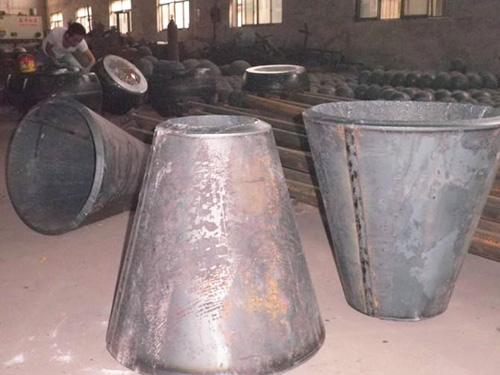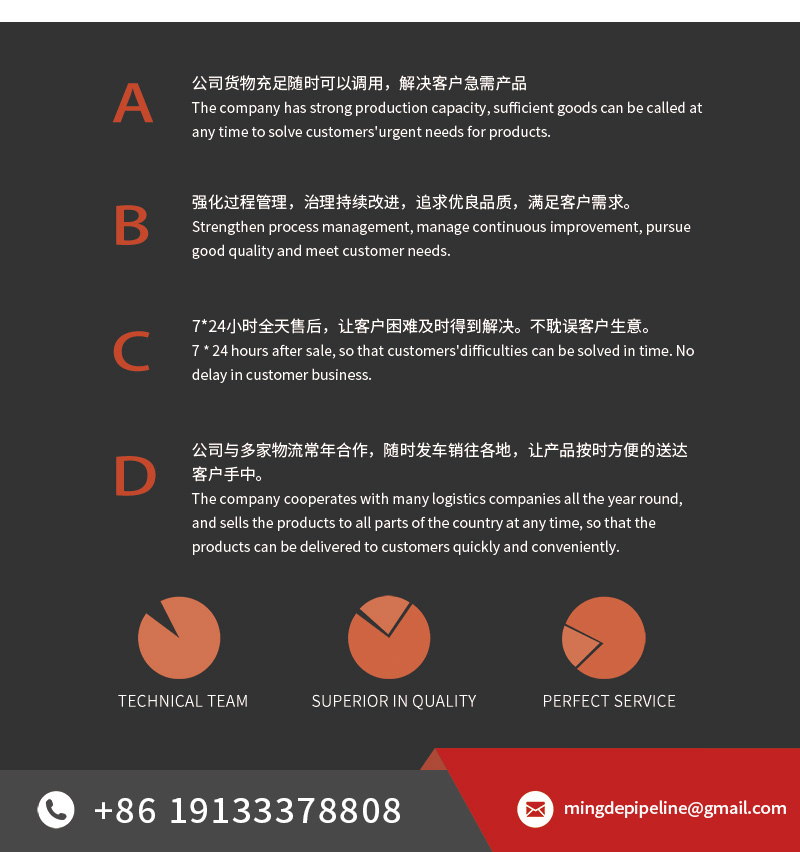
Cone-shaped head

The cone-shaped head, also known as a conical head, is a specially designed component used in pressure vessels, storage tanks, and various types of industrial equipment. Its primary function is to transition between two different diameters of pipe or vessel sections while maintaining structural integrity and ensuring smooth flow dynamics. Cone-shaped heads are engineered to handle internal pressure and mechanical stress while also providing efficient space utilization in process systems.
Unlike standard hemispherical, elliptical, or flat heads, the cone-shaped design features a sloped structure that tapers from a larger diameter to a smaller one—or vice versa. This shape is not only structurally sound but also highly functional in systems that require direction changes, pressure management, or volume reduction in a confined area.
Design and Structural Features
A cone-shaped head consists of a conical shell typically welded to cylindrical sections on either side. The tapering angle can vary depending on the design requirements, and both the large and small ends can be open or closed depending on its function within the system. The transition can be gradual or steep, and the head may include knuckles, straight flanges, or reinforced sections for added strength and connection flexibility.
Its design enables it to accommodate pressure loads while providing a compact and space-saving solution in vertical or horizontal installations.
Key Advantages
Efficient Flow Transition
The conical shape provides a smooth transition between different pipe diameters, minimizing turbulence, pressure loss, and energy consumption during fluid transport.
Space Optimization
Cone-shaped heads allow for effective space utilization, especially in vertical vessels or confined layouts where reducing the vessel diameter is necessary.
Versatility
These heads can be used in a wide range of systems, including reactors, silos, separators, and heat exchangers. They are suitable for handling gases, liquids, powders, and granular materials.
Structural Strength
Depending on the cone angle and wall thickness, conical heads offer excellent mechanical strength and can be designed to withstand both internal and external pressure.
Customization Capability
Cone-shaped heads are highly customizable in terms of diameter, length, thickness, cone angle, material, and edge treatment. This makes them suitable for both standard and complex projects.
Typical Applications
Cone-shaped heads are widely used in industries that require changes in flow direction or transitions in pipe/vessel diameter. Common applications include:
Pressure Vessels and Boilers
As transition components for high- or low-pressure sections in industrial boilers and process tanks.
Chemical and Petrochemical Industry
Used in reactors, separators, and scrubbers where design flexibility and pressure handling are critical.
Food and Beverage Processing
Ideal for hoppers and silos where the tapered shape helps guide flow and prevent material buildup.
Pharmaceutical and Biotechnology
Applied in clean systems to ensure smooth drainage and avoid contamination or residue.
Power Generation
Used in condensers, economizers, and transition ducts in thermal and nuclear power plants.
Mining and Bulk Material Handling
Common in hoppers and bins where gravitational flow of solids is needed.
Material Options
To meet a variety of operating conditions, cone-shaped heads are manufactured from different materials, including:
Carbon Steel – For standard industrial applications where high strength is needed at a reasonable cost.
Stainless Steel – For corrosion resistance, cleanliness, and hygienic applications.
Alloy Steels – For high-temperature or high-pressure systems.
Aluminum or Non-ferrous Metals – For lightweight and corrosion-resistant applications.
The choice of material depends on factors such as temperature, pressure, corrosion resistance, and regulatory compliance.
Manufacturing Methods
Cone-shaped heads can be produced using different fabrication techniques:
Cold Forming – Suitable for thinner plates and shallow cones, maintaining surface quality.
Hot Forming – Used for thicker materials or steep cone angles, offering better shaping capability.
Segmented Construction – For large-diameter heads, assembled from multiple plates and welded together.
Each method ensures the required dimensional accuracy, surface finish, and strength to meet industry standards.
Finishing and Connection Options
Cone-shaped heads can be supplied with various edge treatments and surface finishes, such as:
Machined or beveled edges for welding
Straight flanges or knuckle radii
Pickled, passivated, or polished surfaces
Coated or painted for corrosion protection
They can be integrated seamlessly with flanges, nozzles, manholes, or support structures based on project requirements.
Conclusion
The cone-shaped head is a versatile and functional component in modern industrial systems. Its unique tapered design provides effective transitions, pressure containment, and flow optimization in a wide range of applications. Whether used in pressure vessels, material handling equipment, or specialized processing tanks, the cone-shaped head offers both engineering reliability and practical design flexibility.
With customizable dimensions, material choices, and fabrication techniques, cone-shaped heads are adaptable to the most demanding operational environments, making them an essential component in high-performance piping and vessel systems.

 NEWS
NEWS
-
Thermal Stress Management with Advanced Pipe Insulation Brackets
2025-11-21 07:46:59
-
Custom Pipe Clamp Solutions for Complex Industrial Applications
2025-11-20 06:58:48
-
Modular Pipe Support Systems: Benefits for Modern Facilities Meta Description
2025-11-19 02:23:52
-
Corrosion-Resistant Brackets for Harsh Environments
2025-11-13 04:04:56
 Contact us
Contact us
Mobile:+86 19133378808
Email:mingdepipeline@gmail.com
Website:https://www.mingdepipe.com
Address:Zhenggang Industrial Park, Yanshan County Economic Development Zone, Cangzhou City, Hebei Province




